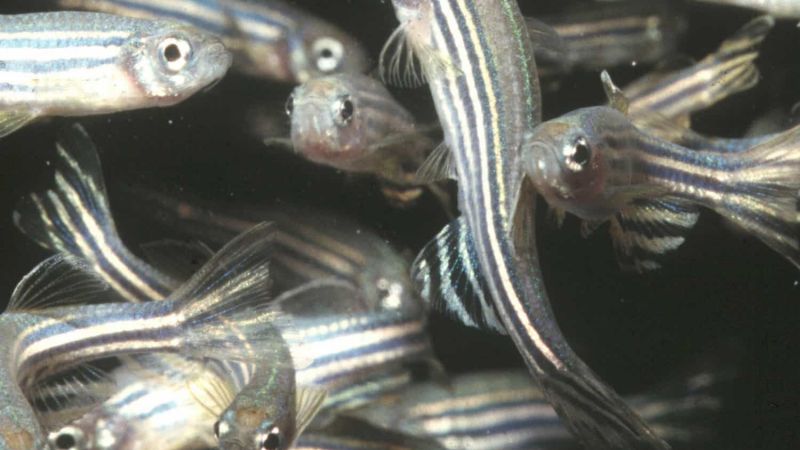
The Biomedical Animal Research News (BARN) Digest collates animal research news from UAR’s 150+ member organisations into one, easy to access, feed. These animal research related stories include topics such as: medical studies and advancements; animal welfare and 3Rs news; funding, regulatory, and policy news; and conservation and environmental research that involves animal testing.
Each week, we pick the most interesting, groundbreaking, and important news to feature in a weekly news roundup. In this round up we feature news stories from 27 August - 2 September 2025.
View BARN to see daily news updates from UAR members.
DISCOVERY/BASIC RESEARCH
Investigating the rhythm of heart development
THE FRANCIS CRICK INSTITUTE | ZEBRAFISH
"New research in zebrafish shows how embryos build a functional heart that keeps beating for life.
To see the heart develop in real time, the team turned to the Crick’s aquatic facility, home to the zebrafish that are used to study early development.
”Zebrafish hearts are very similar to ours in terms of structure and function, but their small size and transparency means we can use live imaging to watch developmental processes unfolding in real time as the heart beats inside the embryo - in this case, how the movements and shape changes of single cells build a functional organ,” explains Toby.
Using powerful microscopes and genetic tools, they discovered that trabecular ridges grow not by cell division, as previously thought, but by moving and rearranging the cells already in place.
They also found that the heart grows by stretching its existing cells, almost doubling in size, allowing the heart to expand its volume by 90% and maximise its blood filling capacity. "
https://www.crick.ac.uk/news/2025-08-06_investigating-the-rhythm-of-heart-development
Discovery could lead to new drug treatments for inflammatory diseases including Alzheimer's
QUEEN'S UNIVERSITY BELFAST | MICE, DOG, MONKEY, PIG, RABBIT, RAT, AND HUMAN CELLS
"A new study, led by Queen’s University Belfast, has characterised a brand-new molecule that can completely block the inflammation associated with a range of diseases including Alzheimer's, asthma, arthritis and obesity. The team hopes that this “inflammasome blocking” molecule may lead to the development of new, targeted anti-inflammatory drugs which will help treat these diseases."
This study used cell based assays created using biological material taken from mice, dogs, monkeys, minipigs, rabbits and rats, as well as humans. More detail available in the study linked below.
Genetic key to why immune responses differ between men and women
UNIVERSITY OF YORK | MICE
"It is known that biological sex affects the function of the immune system, with females often being more severely affected by autoimmune conditions or allergic diseases. Scientists from the University of York have now identified the gene Malat1 as a critical player in regulating immune responses in female immune cells, but not in males.
The team studied T cells, a pillar of our immune system, in the lab and animal models of inflammation. The study focused on a type of immune cell called Th2 cells, which protect the body from parasitic infections, such as schistosomiasis, but also promote severe allergies, such as asthma.
The team discovered that, in female mice, Th2 cells did not develop appropriately during lung inflammation when the gene Malat1 was missing. However, this defect was not seen in male mice. "
https://www.york.ac.uk/news-and-events/news/2025/research/genetic-key-immune-responses-male-females/
The body’s peacekeepers: how specialised immune cells keep a lid on inflammation
THE FRANCIS CRICK INSTITUTE | MICE
"By revealing the molecular mechanisms behind the peacekeeping abilities of specialised immune cells, scientists are uncovering new pathways for treating autoimmune conditions and detecting diseases like cancer.
In research published today in Nature, Carola and her team at the Crick and former colleagues from Australian National University, showed how two proteins – TCF1 and LEF1, previously only studied in T cells – enable B-1 cells to apply the brakes on inflammation in mice and used this information to identify signs of B-1 activity in humans."
Chronic pain research breakthrough identifies promising drug target
UNIVERSITY OF OXFORD | MICE
"To understand why some people are more affected by chronic pain, the research team in NDCN first used UK Biobank to compare genetic data with participant responses to a questionnaire on pain. They found that people with a variant of a gene called SLC45A4 were more likely to report higher levels of pain. These findings were replicated when using data from other major population studies, such as FinnGen.
The researchers then set out to understand what this gene encodes. Conducting experiments in mice lacking SLC45A4 - a gene they share with humans - the animals showed a lower response to typical pain stimuli. The mouse nervous system is not identical to humans, but there are plenty of basic mechanisms shared between them, humans and other mammals, showing promise for future research into the SLC45A4 gene."
Visit BARN for daily news updates
Last edited: 20 October 2025 13:21




